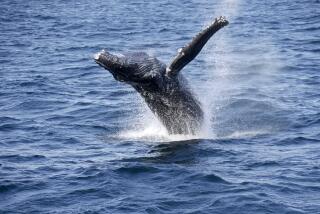Points of contention
- Share via
The Navy said it has developed 29 measures to protect marine mammals from potential harm caused by mid-frequency active sonar, but a federal judge called the mitigation plan “grossly inadequate” and ordered additional safeguards. Some key sticking points:
* Under Navy policy, ships must shut down sonar when whales, dolphins or other marine mammals are spotted within 200 yards. The judge expanded that safety zone to 2,200 yards. The Navy predicted this would disrupt training exercises that require continual sonar tracking.
* The judge restricted sonar training in the Catalina basin, an area known for its abundance of protected whales and dolphins. The Navy says it needs to train in conditions this area provides.
* The court ordered that surveillance for marine mammals begin an hour before the exercises start and include aerial surveillance and passive acoustic monitoring to listen for whales and dolphins.
* The court ordered sonar power reductions under certain sea conditions that alter the propagation of sound waves and allow powerful sonar blasts to travel farther than usual. The Navy said it needs to train in these conditions because quiet diesel-electric submarines use them to evade detection.
Source: Times staff reports, U.S. Navy, U.S. District Court
More to Read
Sign up for Essential California
The most important California stories and recommendations in your inbox every morning.
You may occasionally receive promotional content from the Los Angeles Times.










